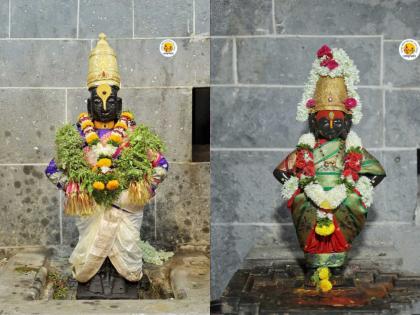Kartiki Ekadashi 2024: Date, Significance, and Rituals of Prabodhini Ekadashi
By Lokmat English Desk | Updated: November 5, 2024 15:45 IST2024-11-05T15:42:47+5:302024-11-05T15:45:08+5:30
In Marathi calendar, the Chaturmas period holds special significance, concluding with Kartiki Ekadashi. Of all the Ekadashi days in ...

Kartiki Ekadashi 2024: Date, Significance, and Rituals of Prabodhini Ekadashi
In Marathi calendar, the Chaturmas period holds special significance, concluding with Kartiki Ekadashi. Of all the Ekadashi days in the Marathi year, Kartiki Ekadashi is particularly important due to its association with the Vishnu Prabodhotsav, or the "Awakening Festival of Vishnu." Ashadhi Ekadashi, also known as Devshayani Ekadashi, marks the day when the gods are believed to go to sleep, while Kartiki Ekadashi, known as Devuthani Ekadashi, signifies their awakening. In 2024, Kartiki Ekadashi will be observed on Tuesday, November 12.
Much like the pilgrimage (wari) to Pandharpur on Ashadhi Ekadashi, thousands of devotees also visit Pandharpur on Kartiki Ekadashi for the darshan of Lord Vitthal. The period between Ashadhi and Kartiki Ekadashis is observed as Chaturmas, symbolizing the night of the gods (Dakshinayan), while Uttarayan is considered the day of the gods. Ashadhi Ekadashi occurs in the month of Ashadha during the Kark (Cancer) Sankranti, hence its name, Devshayani Ekadashi. On this day, Lord Vishnu is believed to enter a state of rest, whereas on Kartik Shuddha Ekadashi, also known as Prabodhini Ekadashi, he awakens.
In 2024, Kartiki Prabodhini Ekadashi falls on November 12, marking the Vishnu Prabodhotsav and the Pandharpur pilgrimage. This date also coincides with the birth anniversary of Sant Namdev Maharaj. Chaturmas will conclude on November 13, 2024, beginning the ritual of Tulsi Vivah, or the ceremonial marriage of Tulsi (holy basil) with Lord Krishna, which can be observed from Kartik Shuddha Dwadashi to the full moon day (Purnima). Performing Tulsi Vivah is believed to grant blessings akin to those received from the kanyadaan, or the giving away of a daughter in marriage.
Also Read: Tulsi Vivah 2024: Date, Shubh Muhurat Time, Puja Vidhi, Rituals, and Spiritual Significance
Tulsi Vivah and the Conclusion of Chaturmas Vows
In Indian tradition, the Tulsi plant holds great religious significance. Known as Haripriya, or "dear to Lord Vishnu," Tulsi is essential to his worship, with the Padma Purana noting that any veneration of Vishnu is incomplete without Tulsi. According to mythology, the Tulsi plant originated from drops of nectar that fell during the Samudra Manthan, or the churning of the ocean. With the celebration of Tulsi Vivah, any vows taken during Chaturmas are concluded with a ceremony known as udyapan.
Open in app